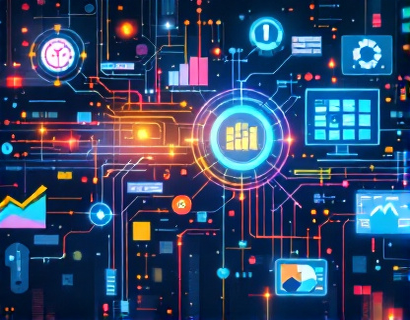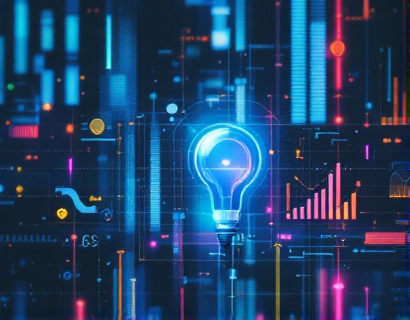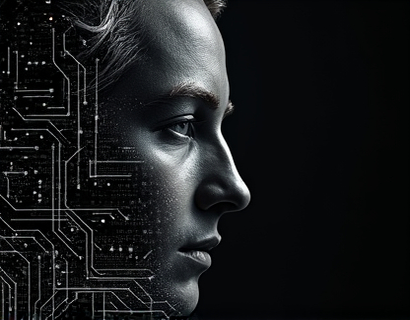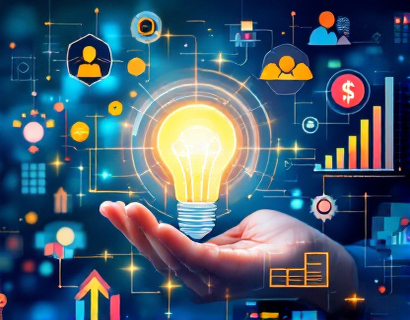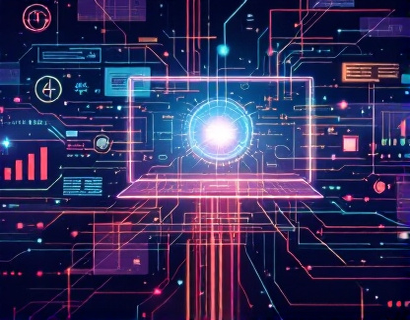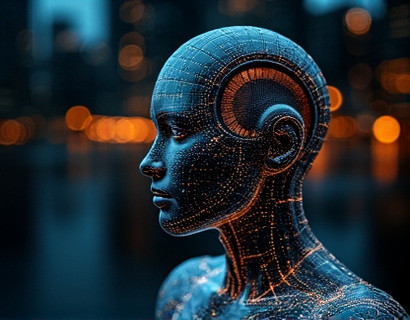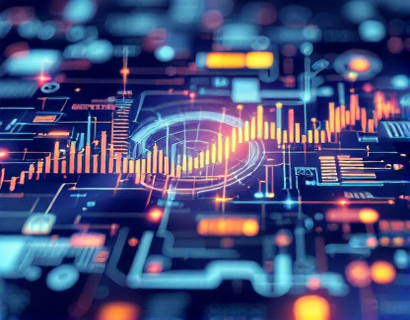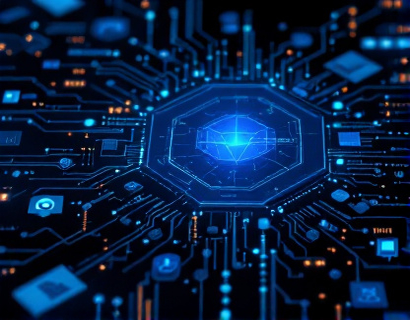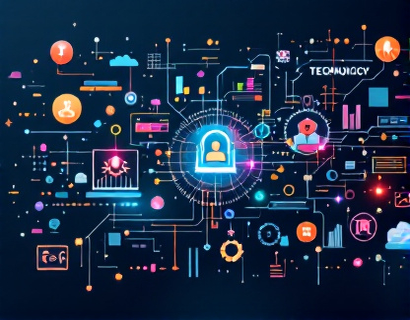Revolutionizing Digital Experiences: The Synergy of Crypto and AI in the Blockchain Era
The intersection of cryptocurrency and artificial intelligence (AI) is ushering in a new era of digital transformation, fundamentally altering business operations and user experiences. This article delves into the profound impact of these technologies, providing a comprehensive guide for tech leaders aiming to navigate and thrive in the blockchain era. By exploring the synergy between crypto and AI, we uncover how this powerful fusion is redefining the digital landscape, offering unprecedented opportunities for innovation and growth.
Understanding the Basics: Cryptocurrency and AI
Cryptocurrency, a digital or virtual currency secured by cryptography, operates on a decentralized network known as blockchain. This technology ensures transparency, security, and immutability, making it an ideal foundation for various applications beyond mere currency. On the other hand, AI refers to the simulation of human intelligence processes by machines, particularly computer systems. These processes include learning (the acquisition of information and rules for using it), reasoning (using rules to reach approximate or definite conclusions), and self-correction. When combined, these technologies create a synergy that can revolutionize multiple industries.
The Transformative Power of Blockchain
Blockchain technology, the backbone of cryptocurrencies, offers a decentralized and secure way to conduct transactions without intermediaries. This has far-reaching implications for sectors such as finance, supply chain, healthcare, and more. The transparency and traceability provided by blockchain enhance trust and efficiency, reducing costs and increasing speed. In the context of business operations, blockchain can streamline processes, ensure data integrity, and enable new models of collaboration and value creation.
AI: Enhancing Decision-Making and Automation
AI's capabilities in data analysis, pattern recognition, and predictive modeling make it an invaluable asset for businesses. By automating routine tasks and providing insights from complex data sets, AI enhances decision-making and operational efficiency. In the realm of customer experience, AI-driven personalization ensures that interactions are tailored to individual preferences, leading to higher satisfaction and loyalty. When integrated with blockchain, AI can leverage the secure and transparent data environment to further enhance its capabilities.
Synergy Between Crypto and AI
The combination of cryptocurrency and AI creates a powerful toolset for innovation. Blockchain provides a secure and transparent platform for AI to operate, ensuring that data used for machine learning is trustworthy and tamper-proof. Conversely, AI can optimize blockchain networks, improving scalability, security, and user experience. This synergy opens up new possibilities for decentralized applications (dApps), smart contracts, and tokenized assets, all of which can be enhanced by AI-driven insights and automation.
Decentralized Applications (dApps)
dApps are applications that run on a blockchain network, leveraging its decentralized nature to provide greater control and security to users. AI can significantly enhance dApps by enabling more sophisticated functionalities. For instance, AI-driven chatbots can provide real-time customer support within dApps, while machine learning algorithms can optimize resource allocation and enhance user engagement. The transparency of blockchain ensures that all interactions within dApps are verifiable and secure, fostering trust among users.
Smart Contracts and AI
Smart contracts are self-executing contracts with the terms of the agreement directly written into code. When combined with AI, smart contracts can become more dynamic and adaptive. AI can analyze conditions and outcomes in real-time, allowing smart contracts to make more informed and intelligent decisions. This can be particularly useful in areas such as insurance, where AI can assess risk factors and adjust contract terms accordingly, ensuring fair and efficient outcomes.
Tokenized Assets and AI
Tokenization involves representing real-world assets as digital tokens on a blockchain. AI can enhance this process by providing deeper insights into asset valuation, market trends, and investor behavior. For example, AI-driven analytics can help in creating more accurate token pricing models, while machine learning can predict market movements, aiding investors in making informed decisions. This fusion also enables the creation of more sophisticated and responsive tokenized products, such as fractional ownership in real estate or art.
Enhancing User Experiences with AI and Crypto
The integration of AI and cryptocurrency can significantly elevate user experiences across various platforms. By leveraging AI's capabilities in data analysis and personalization, businesses can offer more tailored and relevant services to users. In the context of blockchain-based platforms, this means a seamless and secure user experience, with transactions and interactions verified and protected by the underlying technology.
Personalized User Interfaces
AI can analyze user behavior and preferences to create personalized interfaces and experiences. In a blockchain environment, this personalization can be enhanced by ensuring that user data is securely stored and managed. AI-driven recommendations can guide users to relevant services and content, improving engagement and satisfaction. For instance, a blockchain-based social media platform can use AI to curate content based on user interests, while ensuring that data privacy is maintained through cryptographic techniques.
Secure and Efficient Transactions
One of the key benefits of blockchain is its ability to facilitate secure and transparent transactions. AI can further enhance this by optimizing transaction processes and detecting potential fraud. Machine learning algorithms can analyze transaction patterns to identify anomalies and prevent unauthorized activities. This not only enhances security but also builds user trust, encouraging more widespread adoption of blockchain-based services.
Challenges and Considerations
While the synergy between crypto and AI offers immense potential, it also comes with challenges that must be addressed. Regulatory compliance, technical complexity, and scalability are among the key issues that businesses and developers need to navigate. Ensuring that AI models are transparent and explainable is crucial, especially in regulated industries. Additionally, the environmental impact of blockchain, particularly proof-of-work systems, is a concern that needs to be addressed through more sustainable consensus mechanisms.
Regulatory Compliance
The regulatory landscape for cryptocurrencies and AI is still evolving, and businesses must stay informed and compliant. This involves understanding local and international regulations, implementing robust compliance measures, and engaging with regulatory bodies to shape policies that foster innovation while protecting consumers. By proactively addressing regulatory challenges, companies can position themselves as leaders in the blockchain and AI space.
Technical Complexity
The integration of AI and blockchain requires a high level of technical expertise. Developers need to be proficient in both blockchain development and AI algorithms, which can be a barrier for some organizations. Collaborating with experts and investing in training and development can help bridge this gap. Open-source projects and community-driven initiatives can also provide valuable resources and support for those looking to leverage this technology.
Scalability and Performance
As the adoption of blockchain and AI grows, scalability becomes a critical concern. Blockchain networks must be able to handle increasing transaction volumes without compromising performance. AI can play a role in optimizing blockchain networks, but the underlying technology must also evolve. Layer 2 solutions, such as sidechains and state channels, can help improve scalability while maintaining the security and decentralization of the blockchain.
Future Outlook: Opportunities and Trends
The future of the blockchain and AI convergence is promising, with numerous opportunities and emerging trends on the horizon. As more organizations recognize the potential of this synergy, we can expect to see increased innovation and adoption across various sectors. Here are some key trends to watch:
Decentralized Finance (DeFi)
DeFi represents a significant area where crypto and AI can make a substantial impact. By combining decentralized financial services with AI-driven analytics, DeFi platforms can offer more efficient, transparent, and accessible financial products. AI can enhance risk management, fraud detection, and portfolio optimization, making DeFi more robust and user-friendly.
Supply Chain Optimization
AI and blockchain can revolutionize supply chain management by providing end-to-end visibility and traceability. AI can optimize logistics, predict demand, and manage inventory, while blockchain ensures that all transactions and movements are recorded securely and transparently. This combination can lead to more efficient, resilient, and sustainable supply chains.
Healthcare Innovations
In healthcare, the fusion of AI and blockchain can enhance patient care, data security, and research. AI can analyze vast amounts of medical data to provide insights and recommendations, while blockchain ensures that patient data is securely stored and shared only with authorized parties. This can lead to more personalized and effective treatments, as well as accelerated drug discovery and clinical trials.
Conclusion
The convergence of cryptocurrency and AI is poised to transform the digital landscape, offering unprecedented opportunities for innovation and growth. By understanding the synergy between these technologies, tech leaders can harness their combined power to revolutionize business operations and user experiences. As the blockchain era unfolds, embracing this synergy will be crucial for staying competitive and relevant in a rapidly evolving technological landscape.



